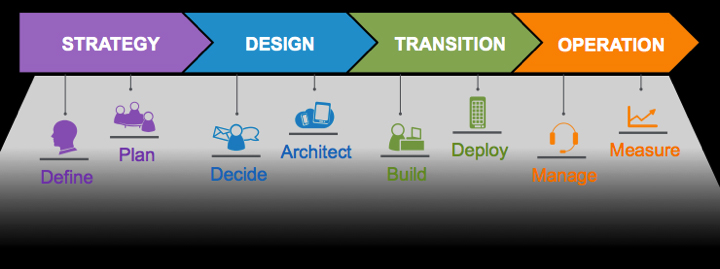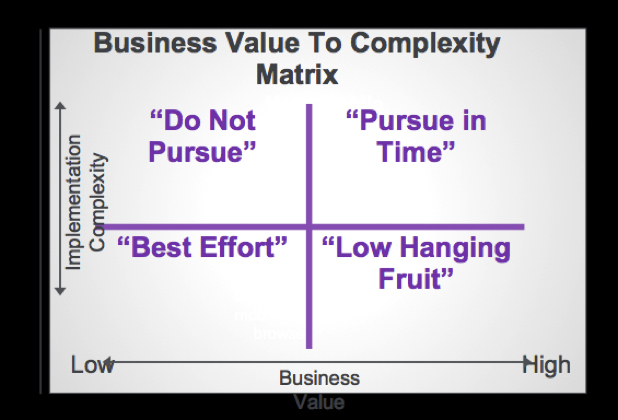Building mobile apps is hard, but crafting and implementing the perfect mobile strategy for your business is even harder. Last week, Citrix and AnyPresence hosted a webinar to share some insights and best practices for enterprise mobility success. Our panel of experts included Richard Cortez, Sr. Director of Enterprise Mobility at Citrix WWCS, Samit Patel, Sr. Director of Worldwide Apps at Citrix and Susan Miller, Chief Strategy Officer at AnyPresence. Below is a summary of what they shared.
As of today, there are over 1.3 millions apps available on the Apple App store, a 100% increase compared to September 2013. And yet, users still can’t find the apps they want. As a result, employees try to plug the “app gap” themselves by bringing their own apps to work, which can jeopardize the security and good operations of a business. Generally, companies are well-aware of these issues and almost 80% of the senior IT executives consider mobility among their top 5 priorities for 2015 with 90% of all organizations having a formal mobile strategy in place. Yet, 80% lack any formal measurements or metrics for identifying, evaluating, and prioritizing their mobility projects and 70% lack the ability to reinvent their business processes to adapt to an ever-changing mobile environment. As a result, mobility decision-making is happening all over the business and organizations are lacking a holistic and scalable approach to maximize ROI, reduce execution time and improve mobile app adoption.

While enterprise executives are increasingly recognizing mobility as a business accelerator that can increase productivity, how do they address the challenges and build a sound mobile strategy?
Lesson 1: Plan mobility-critical success factors by ITIL Phase The main hurdle enterprises face is finding a starting point for their mobility efforts. There are several approaches but the one detailed here is simple, intuitive and easy to follow.

Phase 1: STRATEGY. It starts (and ends) with the end users. It is critical for the IS team to know what the employees and their organizations are doing. The only way to gather that information is to interview the end users, understand exactly what applications they are using, what business processes they are following and what are their day-to-day collaborations with other departments. Based on that research, IS can build detailed end user profiles, detailing how employees are using mobility today and how they are envisioning mobility in the future. Then, the next step is to align those mobility use cases back to the business objectives and subsequently prioritize them on that basis. The deliverable of that phase is a map of the applications on the business value to complexity matrix; a way of communicating what can be done quickly and have the most immediate impact while identifying more challenging projects to be tackled in the future. It is also helpful to set up a mobility center of excellence to improve communication with the stakeholders and end users.

Phase 2: DESIGN. The next phase is about building a framework and selecting the vendors. At this point, the use cases, the regulatory requirements, and the policies have been identified and documented. The IS organization understands how the business is interacting internally and externally and what their needs are in terms of mobility. From there, the IS group can define which technology app development solution will be selected for each application. The expected outcomes of that phase are a comprehensive set of mobility policy definitions, application solutions patterns and a full design of the end-to-end future state.
Phase 3: TRANSITION. This is the building and deploy phase. Once the apps are ready, it is critical to thoroughly test them in a test environment and execute a production pilot. Also essential to the success of this mobility effort is a comprehensive organization-wide communication plan. This is a major transition for the end users and they should be encouraged to provide their viewpoints on innovative ways to drive collaboration that fit within the culture of the organization.
Phase 4: OPERATION. It’s finally time to launch and manage the applications. Many support functions are affected and need to be adjusted to support the platform and the applications provided to the user community. The support team must receive a detailed operation plan and training prior to launch. Moving forward, the IS team has to make sure they are aware of upcoming changes in devices and new platform features and functions. Early access to new releases will allow them to test and run the new version in parallel to avoid unexpected crisis.
Phase 5: Continuous improvements: You can’t improve what you don’t measure. Measuring productivity, usage, customer satisfaction, and studying the mobility issues that come through the service desk help improve and define corrective actions to continuously enhance the end-user mobility experience.
Lesson 2: Extend workflow to business mobilization
This next lesson is about how the organization workflow can be extended to business mobilization. It starts by studying what the processes and workflow employees are following and the different apps they use to do their job. Then, as employees crave simplicity and ease of use, the solution is to build one app that has all the pieces come together. This type of application is called a composite app. The idea is really about getting creative around how to improve a process and how mobility can enable it. Beyond just building an app, it’s about taking the end user point of view; understand the business functions and the business objectives and creating a more efficient workflow enabled by mobility.
This sums up 2 of the 4 lessons from our Webinar with Citrix. Stay tuned as our next blog post will cover the next 2 lessons. In the meantime, you can click here to access the recorded webinar or download the slides.